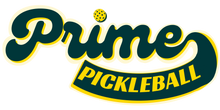If you're new to the game, navigating the rules, equipment, and techniques can feel daunting. Fear not! This comprehensive beginner's guide will walk you through everything you need to know to get started on your pickleball journey.
Understanding the Basics: Pickleball is played on a court similar to a badminton court, with a net lowered to 34 inches at the center. The game can be played singles or doubles, and the objective is to score points by hitting the ball over the net and into the opponent's court. Let's break down the key components:
-
Rules of Play:
-
Equipment:
- Paddle: Pickleball paddles are smaller than tennis rackets and larger than ping pong paddles, typically made of lightweight materials like wood, composite, or graphite.
- Ball: Pickleballs are perforated plastic balls, similar in size to a wiffle ball, designed for optimal bounce and flight.
-
Basic Techniques:
- Grip: Hold the paddle with a firm but relaxed grip, similar to shaking hands.
- Serve: Start with the ball in one hand, hold the paddle in the other, and make an underhand serve, aiming to hit diagonally crosscourt.
- Dink: A soft shot played close to the net, executed by lightly tapping the ball with the paddle.
- Groundstroke: A shot hit after the ball bounces, using a forehand or backhand stroke technique.
- Volley: A shot hit in the air before the ball bounces, typically executed near the non-volley zone line.
Tips for Beginners:
- Focus on Control: In the beginning, prioritize control over power. Mastering placement and accuracy will serve you well as you progress.
- Practice Volleys: Work on your volleying technique to gain confidence at the net and improve your ability to react quickly.
- Footwork Matters: Pay attention to your footwork, maintaining a balanced stance and moving efficiently to position yourself for each shot.
- Learn the Non-Volley Zone: Respect the non-volley zone and practice dinking and volleying from just outside its boundaries to maximize your effectiveness.
- Have Fun: Above all, remember that pickleball is a game meant to be enjoyed. Embrace the learning process, celebrate your progress, and have fun on the court!
Conclusion: With this beginner's guide to pickleball, you're well-equipped to embark on your pickleball journey with confidence. Whether you're drawn to the social aspects, the competitive thrill, or the fitness benefits, pickleball offers something for everyone. So grab your paddle, hit the court, and prepare to fall in love with this addictive and exhilarating sport!
